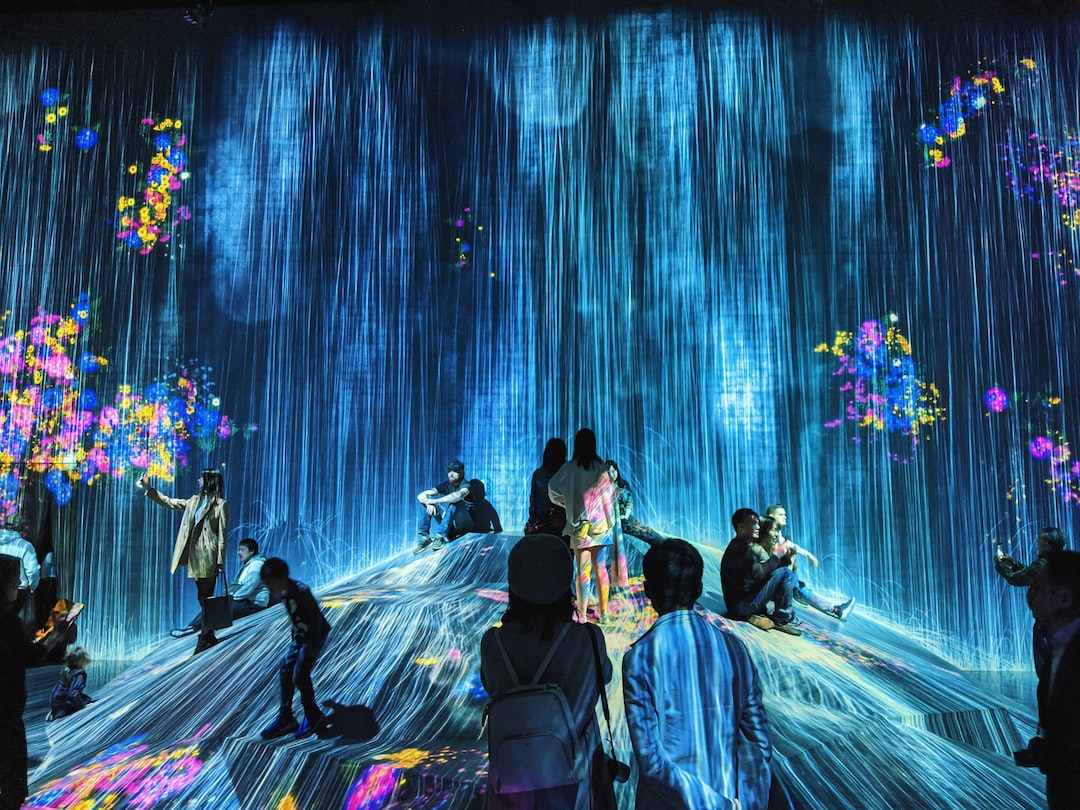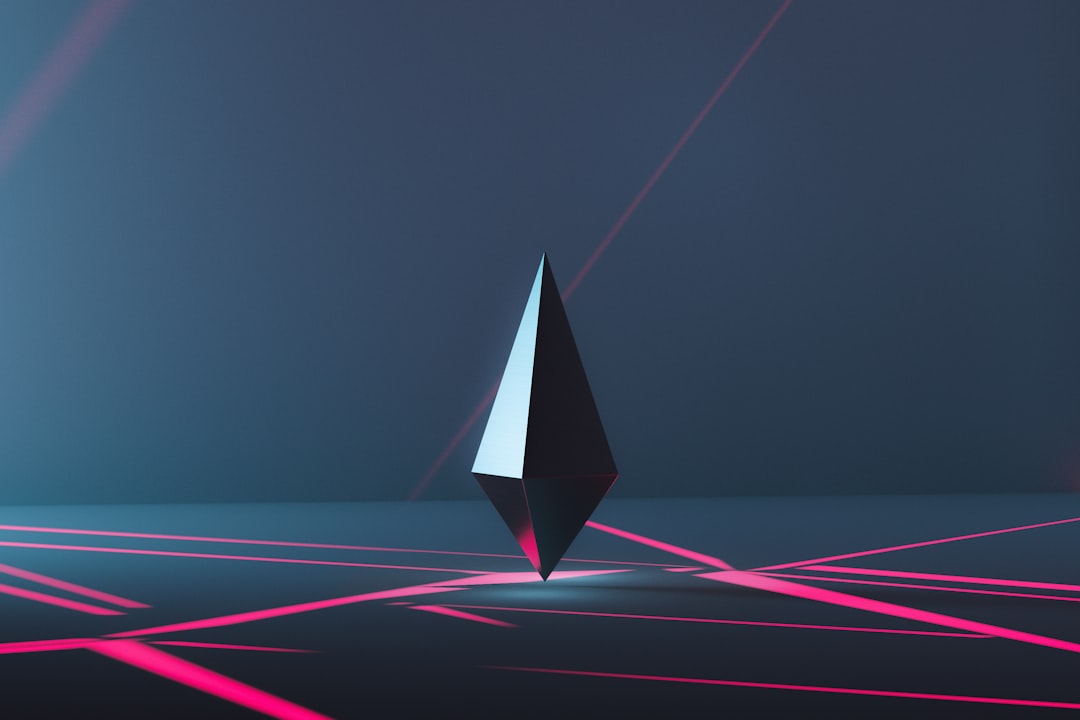Crypto art and non-fungible tokens (NFTs) have recently been making headlines in the art world, disrupting traditional notions of art ownership and the art market. But what exactly are they?
Crypto art is digital art that is created using cryptocurrencies, blockchain technology, and other decentralized tools. NFTs, on the other hand, are unique digital tokens that are connected to a specific piece of digital art, such as a GIF, image, or video, which can be bought and sold on various online marketplaces.
The surge in popularity of crypto art and NFTs can be attributed to several factors, including the increasing acceptance and mainstream interest in digital art, the growing interest in blockchain technology, and the potential for artists to receive a larger percentage of sales revenue by cutting out traditional middlemen in the art market.
Moreover, NFTs have been used to authenticate digital art as unique objects, solving the problem of digital art being easily copied and distributed without the artist’s consent.
In this blog post, we will explore the various aspects of crypto art and NFTs, their impact on the art world, and the potential long-term implications for both artists and collectors. So let’s dive deeper into this exciting and rapidly evolving field.
Digital Art Goes Mainstream
Digital art, which was once considered a novelty or niche interest, has seen a tremendous evolution in terms of acceptance and proliferation in recent times. The emergence of platforms such as Instagram, Tumblr, and Pinterest has facilitated the spread of digital art and made it more accessible to the masses. Artists, both new and established, have flocked to these platforms to showcase their talents and reach wider audiences than ever before.
Moreover, technological advancements in the field of digital art have led to the creation of more complex and sophisticated pieces of art that can rival traditional forms of art in terms of complexity and detail. From digital paintings to computer-generated sculptures, the range of digital art that exists is remarkable.
The increasing ubiquity of digital art has also led to a growing acceptance of this form of art by traditional art institutions. Many art galleries and museums have embraced digital art and have even started hosting exhibitions dedicated solely to digital art. The inclusion of digital art in such prestigious institutions serves to further legitimize this art form and give it greater visibility.
All these developments, along with the rise of blockchain technology and NFTs, have propelled digital art to new heights of popularity and acceptance. Artists who have historically struggled to sell their digital art for profitable prices have now found a new avenue to do so via NFTs. Owning a digital artwork through an NFT does not only validate the ownership but also provides an opportunity to support emerging creatives.
In addition, NFTs have created a new paradigm for how art is valued and traded. Whereas in the past, art collecting was primarily the domain of the wealthy and elite, NFTs have democratized the art market by allowing anyone to own a piece of art, regardless of their financial status. This shift in power has the potential to redefine the art world and opens up new opportunities for artists and collectors alike.
In conclusion, the adoption of digital art into the mainstream, coupled with the rise of NFTs, has transformed the art world into a more inclusive and accessible arena. The increasing popularity of digital art and NFTs also provides new opportunities for artists and collectors, and the potential for further innovation is exciting.
Whereas in the past, art collecting was primarily the domain of the wealthy and elite, NFTs have democratized the art market by allowing anyone to own a piece of art, regardless of their financial status.
NFTs and Art Collecting: Analyzing how NFTs are changing the way art is bought and sold
In recent years, there has been a significant shift in the way art collectors buy and sell art. Traditionally, art collectors would purchase physical artwork, which would then be traded on the secondary market. However, with the introduction of Non-Fungible Tokens (NFTs), art collectors are now able to buy and sell digital artwork as a unique, one-of-a-kind asset.
NFTs utilize blockchain technology, which provides a secure, verifiable proof of ownership for digital content. This has led to a rise in popularity of crypto art – digital artwork that is authenticated using NFTs.
One of the most significant benefits of NFTs is that they allow artists to receive a share of the profits from art sales on the secondary market. This is a significant change from traditional art sales, wherein artists receive no compensation for their work after the initial sale.
Furthermore, NFTs have opened up new possibilities for collecting art. Collectors are now able to own and display digital art pieces in a way that was not possible before. It has also democratized the art world since digital art can be created and owned by anyone, regardless of their connections to the traditional art market.
However, there are also some concerns associated with NFTs and crypto art, such as the environmental impact of blockchain technology, the potential for fraudulent artwork, and the high cost of entry into the market.
Regardless of the controversies and criticisms surrounding NFTs and crypto art, it is clear that these developments are changing the art world in profound ways. Art collectors and investors are taking notice and recognizing the potential long-term value of owning unique, authenticated digital assets.
Overall, NFTs have opened new possibilities for artists, art collectors, and investors. As the crypto art market continues to grow, it will be fascinating to see what other changes and developments emerge in the world of art collecting.
Crypto Art as a New Investment Opportunity
With the rise of NFTs, crypto art has become a new avenue for investment. Digital art pieces that were once considered a niche interest are now being sold for millions of dollars at auction houses like Christie’s and Sotheby’s. This newfound interest in crypto art has led to a surge in popularity and value for these unique pieces.
For investors, buying crypto art has become a means of diversifying their portfolios. Unlike traditional artwork, which can be difficult to value and sell, NFTs provide a transparent and accessible platform for buying and selling digital art. Moreover, NFTs make it possible for investors to support individual artists, providing a new financial stream that can help artists achieve financial stability and recognition.
There is also the potential for significant returns on investment. Cryptocurrencies like Bitcoin and Ethereum, which are used to purchase NFTs, have seen significant growth in value over the past decade. In addition, the unique nature of NFTs means that they can appreciate in value as demand increases. With more collectors and investors becoming interested in crypto art, there is a strong potential for significant returns in the future.
However, it is important to note that investing in crypto art is still a relatively new and untested market. Prices and valuations can fluctuate rapidly, and there is no guarantee of success. Additionally, the high energy consumption associated with the creation and trading of NFTs has given rise to environmental concerns, leading to some artists and collectors questioning the sustainability of the market.
Despite these challenges, crypto art and NFTs are quickly becoming a viable investment opportunity for those who are interested in art and technology. As the market continues to evolve and grow, it is likely that we will see more investment opportunities emerge, making crypto art a valuable asset class in the future.
Digital art pieces that were once considered a niche interest are now being sold for millions of dollars at auction houses like Christie’s and Sotheby’s.
The Future of Crypto Art and NFTs
The rise of crypto art and NFTs has completely disrupted the traditional art world, creating a new innovative space that is gaining popularity and appeal day by day. Artists and collectors have received a new lease of life thanks to this novel digital experience, emerging technologies that are reshaping the way we understand art, and the future looks bright for the crypto art and NFT industries.
One potential long-term impact of crypto art and NFTs on the art world is its democratization. The NFT market has created a level playing ground for all artists, allowing makers to connect with audiences despite the potential challenges posed by traditional gallery spaces. The blockchain technology behind NFTs has enabled artists to monetize and distribute their artwork without the need for galleries and distributors, creating a completely new economy for the creative industry.
We can also expect that the increased popularity and adoption of NFTs could lead to a stronger relationship between the art world and the tech industry. The NFT market has already attracted interest from big players like Google and eBay, who have taken steps to incorporate these digital assets into their platforms. This development is an endorsement of the legitimacy of the crypto art and NFT space, with the potential to attract vast amounts of capital to the industry.
Furthermore, as artists continue to create new ways to integrate blockchain technology into their artwork, we can expect to see more cultural and social commentary emerging in the crypto art space. As blockchain technology enables artists to create unique, one-of-a-kind art pieces that can be traded on the market, we should expect to see more interesting art pieces emerge as creators continue to explore the possibilities of this new medium.
Another significant impact of crypto art and NFTs on the art world is the potential to increase transparency and traceability. The blockchain technology used to create and distribute NFTs means that artwork ownership can be easily traced and verified, reducing the chances of fraud and forgery. This transparency could revolutionize the art world and restore trust in a market that has been plagued by corruption and forgery for centuries.
Finally, beyond the art world, we should expect to see the impact of crypto art and NFTs spreading to other creative industries, including music and film. Already, several musicians and filmmakers have utilized NFTs to sell digital assets and offer unique experiences to their fans. As we continue to see new use cases of NFTs, we can expect to see more opportunities opening up for creatives to monetize their work in new and innovative ways.
The blockchain technology behind NFTs has enabled artists to monetize and distribute their artwork without the need for galleries and distributors, creating a completely new economy for the creative industry.
Making Sense of the Hype
With any new trend or technology, there is bound to be criticism and controversy, and crypto art and NFTs are no exception. Some critics argue that the hype surrounding NFTs is merely a speculative bubble, and that the art world is responding to the latest fad just like any other market. Others argue that crypto art and NFTs are contributing to the financialization and commodification of art, reducing the value of art to its speculative worth rather than its aesthetic and cultural value.
On the other hand, proponents of crypto art and NFTs argue that they offer a unique opportunity to democratize the art world, breaking down the barriers to entry for artists and collectors alike. By using blockchain technology, artists can sell their work directly to collectors without the need for a middleman, allowing for greater autonomy and control over the value and distribution of their work. Furthermore, NFTs can ensure that artists receive ongoing royalties for their work, ensuring that they continue to be compensated for their contributions to the art world long after the initial sale.
Ultimately, the debate surrounding crypto art and NFTs is unlikely to be resolved anytime soon. However, it is clear that these technologies are shaking up the art world and offering new opportunities and challenges for artists, collectors, and enthusiasts alike. As the market continues to evolve, it will be fascinating to see how digital art and NFTs continue to change the way we think about art and its value.
Others argue that crypto art and NFTs are contributing to the financialization and commodification of art, reducing the value of art to its speculative worth rather than its aesthetic and cultural value.
Conclusion: The Potential Impact of Crypto Art and NFTs on the Art World
As we have seen, the recent surge in popularity for crypto art and NFTs has opened up new avenues for artists, collectors, and investors alike. Digital art has gone mainstream, and as a result, we are witnessing a transformation taking place within the art world.
NFTs are changing the way art is bought and sold, providing a secure and transparent means for ownership and authentication. This in turn has created new opportunities for artists to monetize their work, and for collectors to invest in and curate their own digital art collections.
What’s more, the rise of crypto art and NFTs has also sparked a dialogue on the value of art in the digital age. For many, the notion of owning a unique digital asset is still a foreign concept, and there are criticisms and controversy surrounding the idea of “owning” something that can be easily duplicated.
However, as with any new technology, there will always be debate and conversation. And while the long-term impact of crypto art and NFTs on the art world remains to be seen, it is clear that these digital innovations are here to stay.
In conclusion, the rise of crypto art and NFTs offers a glimpse into an exciting and transformative future for the art world. As artists continue to explore the possibilities of digital media, and collectors and investors look for new ways to engage with and invest in art, we can expect to see new opportunities and challenges arising.
But the potential rewards are significant, and the impact of these digital innovations could be profound. Art has always been a reflection of the culture and society in which it is created, and as such, crypto art and NFTs offer a unique opportunity to shape the future of the art world in profound and meaningful ways.





